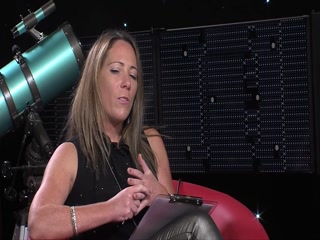Description
2020 ExoMars Rover: What it will do on the surface and when – what instruments does it have? Cameras, ground penetrating RADAR, drill to sample 2m beneath surface, variety of on-board analytical ...tools to analyse the sample from the drill. Life on Mars: It’s hard to explore origin of life on Earth, as very few rocks from this era. Mars has lots of ancient rocks though – perhaps we can study origin of life there? If we find independent origin of life on Mars then that probably means the Galaxy is teeming with life! That’s a big deal! Where should we go on Mars to find life?: Ancient areas (Mars environment is now too harsh for life near the surface). There are areas with evidence of long-lived water. Why landing site selection is important if we want the best chance of finding life: Has got to be a safe landing area. The geology has to be such that we are pretty sure what the environment was like when the rocks were laid down. It’s only from the geology that we can determine where to go to look for ancient life. Talk about the work our team at OU has done on the landing sites: A call for landing sites from ESA in (2013?). About eight sites were narrowed down to four at a workshop, then to three at a follow up workshop. UK team have had a lot of input and we still are lead proposer for one of the final three sites (‘Aram Dorsum’). Aram Dorsum is an ancient river system that was active 3.7 billion years ago. It was then buried for perhaps several billion years, and then re-exposed. Importantly, it contains what appear to be flood plains – which are nice, low energy environments where evidence for past life could be concentrated and preserved.
2020 ExoMars Rover: What it will do on the surface and when – what instruments does it have? Cameras, ground penetrating RADAR, drill to sample 2m beneath surface, variety of on-board analytical ...tools to analyse the sample from the drill. Life on Mars: It’s hard to explore origin of life on Earth, as very few rocks from this era. Mars has lots of ancient rocks though – perhaps we can study origin of life there? If we find independent origin of life on Mars then that probably means the Galaxy is teeming with life! That’s a big deal! Where should we go on Mars to find life?: Ancient areas (Mars environment is now too harsh for life near the surface). There are areas with evidence of long-lived water. Why landing site selection is important if we want the best chance of finding life: Has got to be a safe landing area. The geology has to be such that we are pretty sure what the environment was like when the rocks were laid down. It’s only from the geology that we can determine where to go to look for ancient life. Talk about the work our team at OU has done on the landing sites: A call for landing sites from ESA in (2013?). About eight sites were narrowed down to four at a workshop, then to three at a follow up workshop. UK team have had a lot of input and we still are lead proposer for one of the final three sites (‘Aram Dorsum’). Aram Dorsum is an ancient river system that was active 3.7 billion years ago. It was then buried for perhaps several billion years, and then re-exposed. Importantly, it contains what appear to be flood plains – which are nice, low energy environments where evidence for past life could be concentrated and preserved.
























